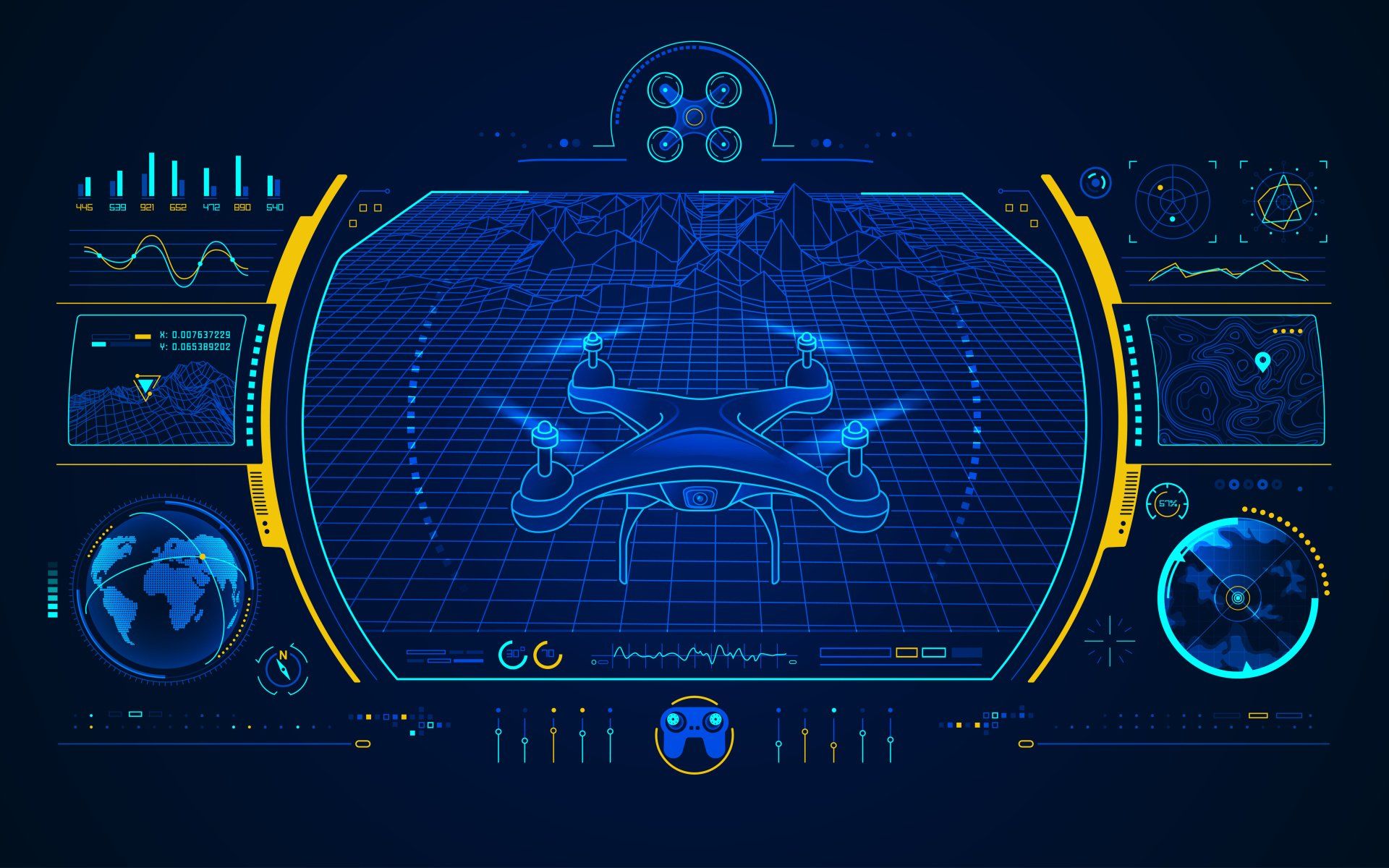Dr Reece Clothier is President of the Australian Association of Uncrewed Systems (AAUS). AAUS is Australia's peak representative body for the drone industry across land, sea, and air domains.
The Ultimate Agriculture Advantage: Interview with Australian Association for Uncrewed Systems President Dr Reece Clothier.
We recently interviewed the President of the Australian Association of Uncrewed Systems (AAUS) Dr Reece Clothier to learn about the latest developments in aerial drones and their promise and potential for Aussie farmers.

TAF: How would you describe the uncrewed systems market in Australia today?
RC: Agriculture, photography, aerial inspection, and infrastructure management are probably the largest commercial use cases for uncrewed systems, which includes aerial drones, in Australia today. A recent Deloitte study, commissioned by the Australian Government, estimated the agricultural market for aerial drones to grow to AUD1.1B by 2030, and those farming and agricultural applications would deliver further efficiency and cost savings of almost AUD3B. But it is not coming, it is already here. More and more pioneering Australian farmers consider drones as indispensable farming equipment. With so many near term applications and a relatively low risk operating environment – Australia’s farming and agriculture sector will be the one of the first industry sectors to truly capitalise off the adoption of aerial drones.
TAF: Tell us about the pay-off for aerial drones in Australian agriculture today?
RC: Most people think of aerial drones as small multi-rotor aircraft equipped with cameras or multi-spectral sensors. That is what is primarily in operation today, used largely for remote sensing and inspection in applications such as crop health management. We are starting to see the scope of applications expand quite rapidly. Aerial drones are now being deployed for precision spraying, targeting weeds and hard to access areas with spot spraying. They are also being used for planting and seed dispersal. Drones are also being used in farm maintenance for inspection of silos, fences, and large machinery. There’s a number of applications enabled by greater connectivity between devices. So you’re seeing drones that don’t just fly and collect data but also uploading that data into existing software packages and farming machinery such as spraying or fertilising delivery systems. It’s becoming increasingly less about the vehicle and the sensors and more about interconnectivity and how it feeds into the broader farming system.
TAF: What is the government doing to advance the potential of aerial drones in Australian agriculture?
RC: The Civil Aviation Safety Authority (CASA), the national aviation safety regulator, is continuing to work with industry to advance the safety regulations governing drones. While there is a lot of work to be done, Australia is widely seen as a world leader in this regard. Industry have been working with CASA to develop a strategic roadmap – essentially a plan for the advancement of safety regulations for this sector. Last year the Federal Government released its National Emerging Aviation Technologies policy, which took a much broader look at the key challenges that need to be addressed. This included aspects such as noise, privacy, security, spectrum, and community acceptance in addition to matters of safety. A key initiative under this policy is a funding program that aims to advance the uptake of drones – with the focus specifically on those applications that benefit rural and regional Australia. So the Government is starting to make some meaningful strides in support of the sector.
TAF: How can Australian agriculture get even more out of aerial drones today?
RC: Key to really opening up the full potential for drones in farming and agriculture is achieving beyond visual line of sight (BVLOS) operation. Without it, the farmer is limited to keeping the aircraft within Visual Lines of Sight (VLOS), which would limit the size of the area a drone could be effectively deployed. If you have huge pastoral land or massive grain farms, you can’t just keep driving and stopping to launch and recover your drone. AAUS has been working collaboratively with CASA to try and forge the knowledge and understanding of what it takes to get a BVLOS approval. As a result of this work, CASA has released standard scenarios for BVLOS operations, which help streamline the requirements and process. AAUS has been delivering free webinars to help operators understand what it takes to safely operate BVLOS and how to get the necessary approvals using these standard scenarios. We are now seeing more and more BVLOS approvals being issued for operations in rural areas, but we still have work to do to broaden the scope of these approvals.
The agriculture application industry for drones will be the first to benefit from more routine BVLOS operation. Farmers are doing it now however it just takes a huge amount of effort. To open up the agriculture application, we really need to get the process moving much more smoothly.
TAF: What risks are posed by the use of aerial drones in Australian agriculture?
RC: The main challenges are in ensuring drones can be safely operated alongside other aircraft or over people and property. In particular, we need to manage the risk of a collision with another aircraft operating at low altitudes, such as helicopters or crop dusters, or a drone impacting a person or house. The relatively low utilisation of airspace and vast areas of low (or no) population mean it’s much easier to close the safety case for drone use in rural and regional areas than it does for drones operating near a city centre. This makes many farming and agricultural applications much more of a near term opportunity.
TAF: How will Australian farmers cope with so much new data sourced by aerial drones?
RC: There is a real risk of “drowning in data” and the solution really lies in connectivity and automation. Farmers don’t have time to go through hours and hours of video data or multispectral data and make sense of it. What they really need is that one image or information product that supports the decisions that need to be made. This is where data analytics and automation come in. Artificial Intelligence (AI) could aid farmers in combining, interpreting and analysing the wealth of data collected by drones and other farm sensing systems. But before all that we need to make sure the data collected by drones can be readily imported into existing farming software and automation systems. This is achieved through standardisation of interfaces and data formats.
TAF: Can you tell us more about the role of AI in aerial drones.
RC: You can liken AI to an expert consultant, available 24/7, that embodies the accumulative expertise of huge datasets. AI can be used to “see” the complex patterns and trends that lie in the data. For example, that certain areas of a crop may have an infestation or need additional water. AI can also suggest courses of action, like the particular type of insecticide and its rate of application, or the amount of water required to those identified areas. The benefit of AI lies in presenting the information relevant to good decision-making. To close the automation loop, approved courses of action could then be simply uploaded to farming spraying or irrigation systems!
Automation and AI also helps overcome issues with connectivity in rural and regional areas. Drones, and many other farm sensing systems, can collect terabytes of data. The challenge is then – how to get all this data back to where you need it? If there is automation or AI at the point of data collection (i.e., on the drone itself), the system can instead process the data in the field and just send back the one important image or piece of information needed by the farmer. So, there is a very strong case for the use of AI in farming and agricultural applications. It’s becoming increasingly less about the aircraft and more and more about the product it collects and how it connects to existing decision-making processes and farming automation systems.
TAF: What does the future look for aerial drones in Australian agriculture?
RC: Farming and agriculture is already one of the largest use cases for drones and it will continue to grow. This growth will be enabled through greater awareness amongst farmers of the applications for drones, continuing advancements in the capability of the drone platforms and associated software systems, and the streamlining of regulatory processes. Processes that enable routine and safe BVLOS operations will enable a raft of new applications, particularly in broadacre farming. Within the next decade, you could readily see large drones undertaking broad area aerial application tasks, shuttling feedstock or equipment, picking up RFID tags of livestock, and even undertaking the mustering.
Much of the technology to do this already exists. However, we still need to advance the regulatory processes to make all these great use cases a reality. AAUS is doing a lot on this front, working with CASA to advance our joint understanding of the safety case and mitigations that need to be in place. We also have a working group exploring the requirements for aerial spraying. There’s a lot of work still to be done but one thing is certain, the potential benefit is huge.

















